CLOSE
inspiring you is my passion
REGGIO INSPIRED PRACTICE GUIDE
CONTACT VERONICA
LOOSE PARTS PLAY GUIDE
FREE RESOURCES
PROFESSIONAL TRAINING
FOR ECE'S
FOR TEAMS
from my perspective
this way to the blog!
TOOLKIT
Documentation
Templates
WORKSHOPS
CUSTOM TEAM BUNDLE
FREE TRAINING - POSSIBILITIES OF LOOSE PARTS
shop
CLOSE
inspiring you is my passion
EDUCATOR LIBRARY
CONTACT VERONICA
FREE LOOSE PARTS GUIDE
RESOURCES
PROFESSIONAL TRAINING
FOR ECE'S
FOR TEAMS
TOOLKIT
Documentation
Templates
WORKSHOPS
DIGITAL PD LIBRARY
LIVE WORKSHOPS
FULL DAY PD
FREE TRAINING - POSSIBILITIES OF LOOSE PARTS
New!!!
shop

inspiring & practical ideas
GET STARTED WITH
loose parts play
FREE DOWNLOAD
This guide is loaded with ideas, inventory lists, and resources to support you in conveying the learning that is happening while children play!
I only want creativity filling your inbox, so you'll see inspiration and support dropping in...but not too much!
We respect your privacy. Unsubscribe at any time.
Updated March 2025 to reflect new insights, real educator questions, and improved strategies for using loose parts play with infants and toddlers.
Loose Parts for Infants and Toddlers: The Ultimate Guide to Getting Started with Confidence
Welcome, fellow educator. If you’ve ever wondered “Can I really do loose parts play with infants and toddlers?”—you’re in the right place.
This is your supportive, step-by-step guide to making loose parts play not only possible, but magical, for the youngest children in your care.
You’re likely here because:
- You’ve seen the magic of loose parts play in preschool spaces…
- You’re overwhelmed by the idea of adapting it for infants and toddlers…
- Or you’ve been told it’s “not safe” or “too messy” for under 3’s…
But here’s the truth: Loose parts play is absolutely possible with infants and toddlers. In fact, it’s one of the most powerful ways to nurture curiosity, confidence, and connection—even with simple materials and a thoughtful mindset.
Common Concerns About Loose Parts for Infants and Toddlers
Before we dive deep, let’s address the common roadblocks you might be facing:
- You feel like it’s too risky and that everything needs to be sanitized, regulated, and perfectly safe—so you freeze before you start.
- You’re constantly battling the mess and thinking, “I can’t do this every day on top of everything else.”
- You want to do it, but you don’t know where to start, or how to explain it to others (especially parents or other staff).
- You’ve seen photos online with hundreds of tiny objects and felt like your space—or budget—just doesn’t measure up.
- You’ve tried something small before… and the children dumped everything out and left you wondering what the point was.
I’ve been there. And I want you to know this: you don’t need fancy materials, complicated set-ups, or even a Pinterest-worthy space. What you do need is a clear understanding of what loose parts play actually looks like for infants and toddlers—and how to set it up in a way that works for you.
💡 Not quite ready to dive in? Start with Getting Started with Loose Parts Play to build your foundation first. This guide will be here for you once you’ve got a solid understanding of the concept and feel ready to apply it to the under 3 crowd.
Here’s what you’ll find in this post—feel free to jump to the section that speaks to you most.
Table of Contents
What is Loose Parts Play for Infants and Toddlers?
Common Myths About Loose Parts Play for Infants and Toddlers (and the Truth)
How to Choose Safe Loose Parts for Infants and Toddlers
Loose Parts Play Ideas for Infants and Toddlers to Try This Week
Mindset Shifts: Supporting Educators and Families
Frequently Asked Questions About Loose Parts for Toddlers and Infants
Free Download: Loose Parts Play for Infants and Toddlers Starter Kit
Where to Go Next on Your Loose Parts Journey
1. What Is Loose Parts Play for Infants and Toddlers?
You’ve probably seen it on Pinterest or Instagram: beautifully staged play spaces with hundreds of tiny wooden pieces or intricate tinker trays that look more like they belong in a museum than a childcare program.
And maybe you’ve thought, “That’s beautiful… but there’s no way I can do that with my group of toddlers.”
But here’s the good news: loose parts play is not about the aesthetic—it’s about the experience.
This play space could be used by either infants or toddlers! It is a simple but yet engaging space filled with traditional materials and loose parts that are all safe for under 3’s!
Loose Parts Play Is About Possibility, Not Products
At its core, loose parts play is about offering children open-ended materials that they can move, combine, experiment with, and make sense of the world through. In spite of what you might see on Pinterest for infants and toddlers, this doesn’t require shelves of curated materials or Pinterest-worthy setups. It just requires an understanding of what loose parts are and what they can do.
As Simon Nicholson, who developed the theory of loose parts, explained—children learn best when they can interact with a rich variety of variables. These “variables” aren’t limited to small parts; they include materials, sounds, textures, weights, light, and movement. When you offer materials that are dynamic and allow for action—that’s loose parts play.

Loose parts play is not defined by what they are, but by what they allow children to do.
So yes, loose parts play can absolutely work for infants and toddlers. In fact, this age group might be the most naturally attuned to the spirit of loose parts play, because their learning is already deeply sensory, relational, and movement-based.
You Might Already Be Doing Loose Parts Play
You’ve probably seen this already in your setting:
- A toddler dumping out a basket of balls so they can carry the container instead.
- An infant tugging and chewing on a textured scarf.
- A child banging wooden rings together, fascinated by the sound.
- Another rolling a cardboard tube, then crawling after it again and again.
That is loose parts play. You might just not have called it that yet.
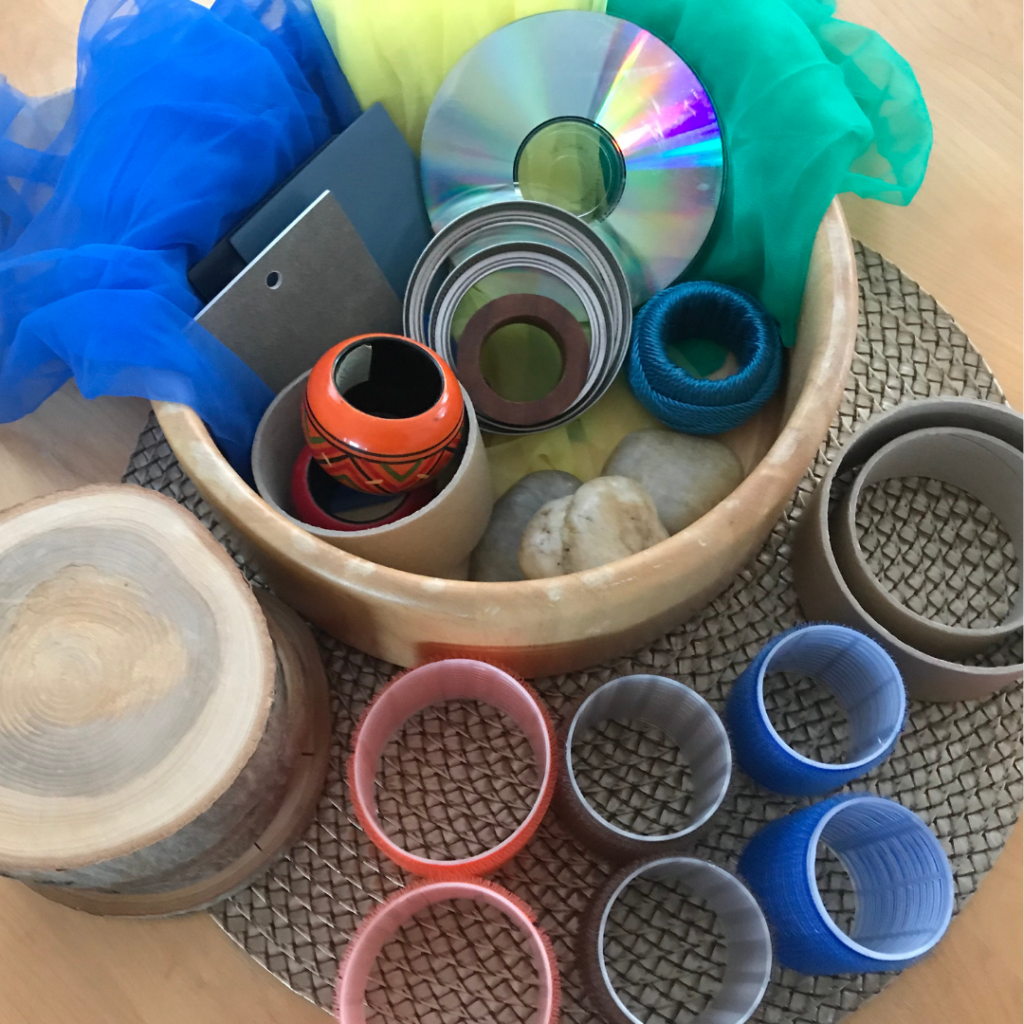
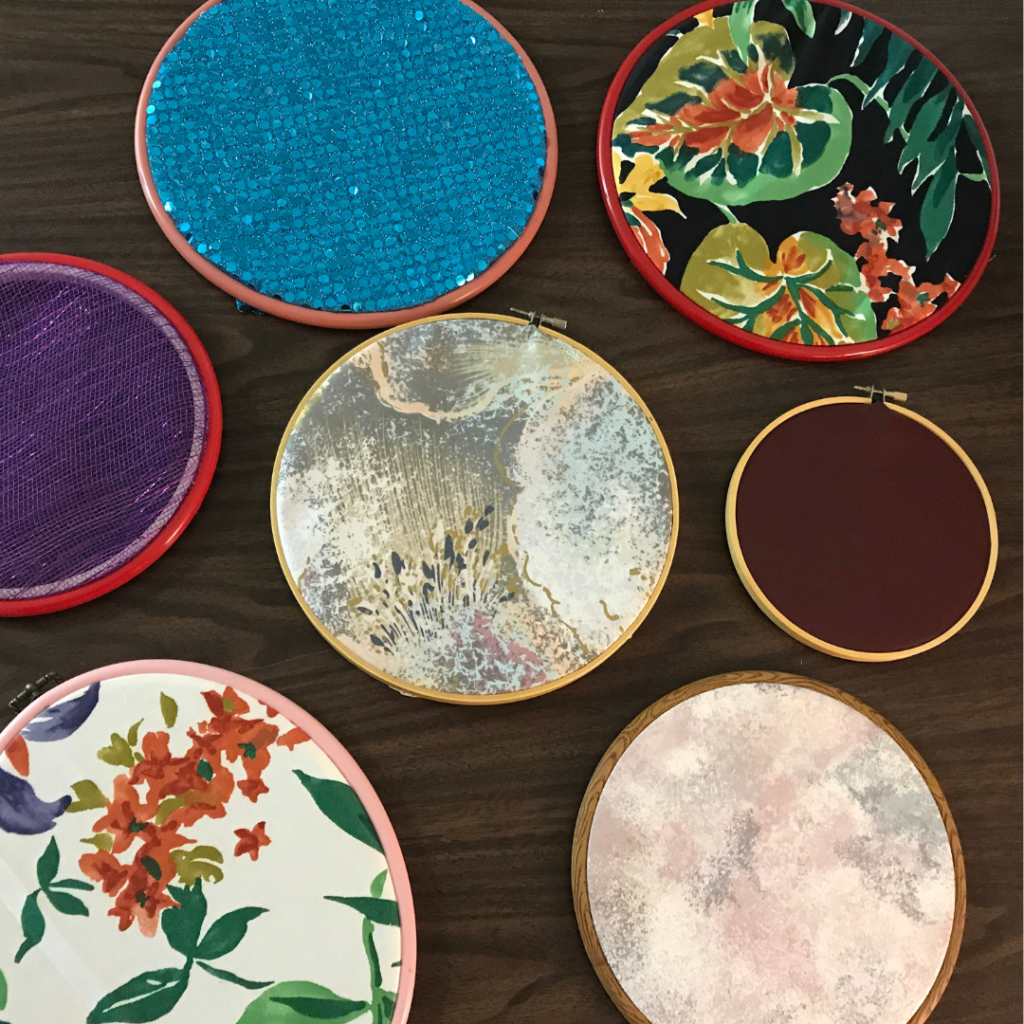
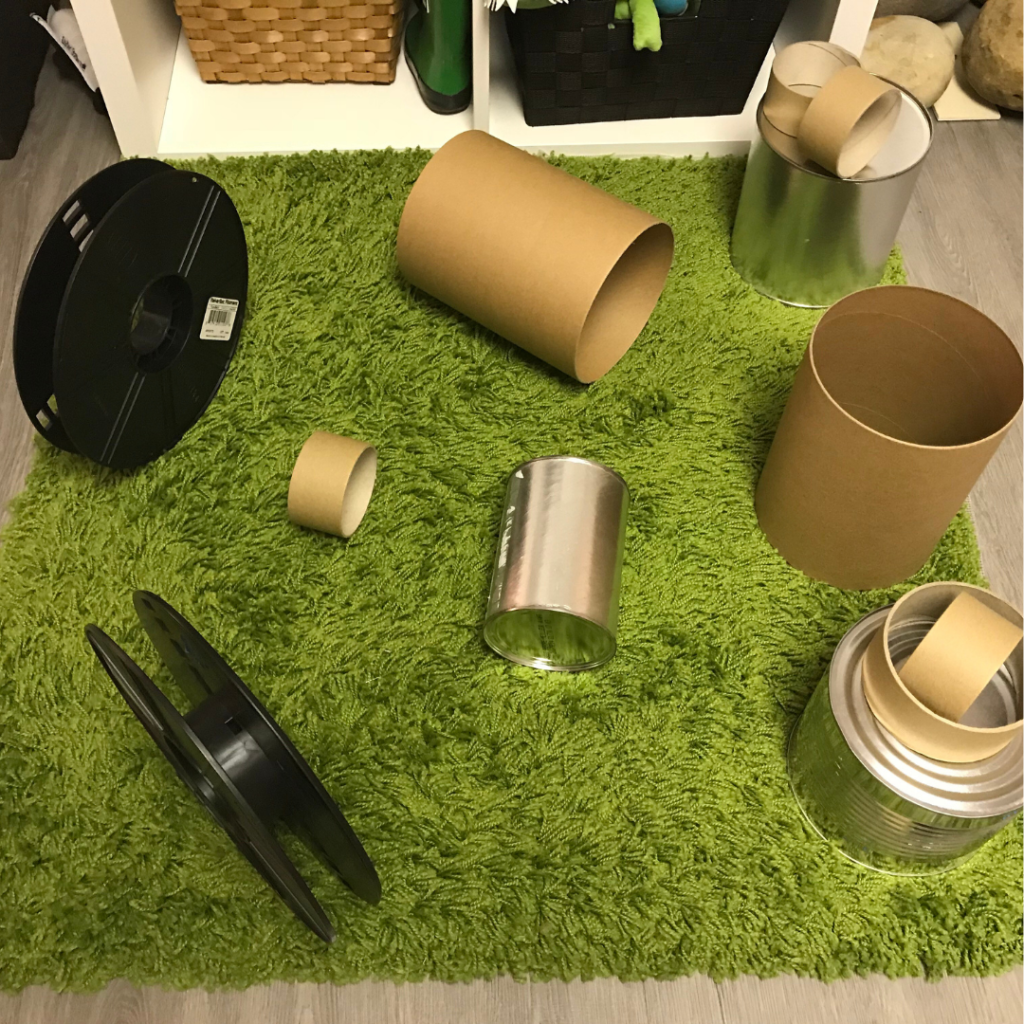
“The best play objects for babies are those which allow them to be as active and competent as possible at every stage of development.” – Magda Gerber
This is why I believe in starting with what children are already doing and reframing it through a new lens. When you can shift your focus from “What should I put out?” to “What actions am I noticing?”—you begin to see that you’re not behind, you’re already on the path.
This mindset ultimately changed everything for me. Years ago, I felt overwhelmed too. I was a new mom, a dayhome provider, and struggling to make sense of all the Pinterest pressure around play. But when I read Nicholson’s paper and really paid attention to how my son was interacting with the world—I realized that I didn’t need more stuff. I needed to observe more deeply.
2. Common Myths About Loose Parts Play for Infants and Toddlers (and the Truth)
Loose parts play for infants and toddlers often feels like stepping into a world full of question marks—especially when most examples you see are for older children. It’s no wonder there are so many misconceptions floating around.
Let’s bust a few of the most common myths I hear from educators just like you.
Myth #1: “Loose parts are dangerous for this age group.”
This is probably the most widespread fear—and it’s valid. Safety matters. But it’s not about if you can use loose parts, it’s about how you use them. When you understand developmental stages, choking hazards, and how to supervise effectively, loose parts become one of the safest and most responsive forms of play.
Truth: Size, supervision, and thoughtful selection make loose parts safe and powerful—even for infants.
A good rule of thumb? If it fits through a paper towel roll, it’s too small. Stick with larger, sturdy, non-toxic materials that can be sanitized and used in multiple ways.
Myth #2: “It’s going to be a chaotic mess.”
Yes, toddlers will dump things. Yes, infants will mouth materials. But this isn’t a sign of failure—it’s a feature, not a flaw.
Truth: Dumping, mouthing, transporting, and banging are developmental actions that show deep engagement and learning.
When we start seeing the action instead of the mess, we shift from control to curiosity. (If you’re struggling with cleanup, I’ve written more about navigating clean-up and loose parts play here).
Myth #3: “Loose parts are mostly small wooden pieces or fancy materials.”
Not at all. For under 3’s, the most magical loose parts are often the simplest—baskets, scarves, silicone baking cups, cardboard tubes, spools, lids, light filters, metal tins…
Truth: Loose parts for infants and toddlers are about sensory variety, movement, and possibility—not perfection.
You don’t need expensive toys or elaborate invitations. You need a few thoughtful items, offered with intention, and the courage to observe how children use them.
Myth #4: “Parents or other educators won’t understand why I’m using this stuff.”
That’s a real concern, especially when introducing materials like pinecones, scarves, or bowls into a space that’s traditionally full of brightly colored plastic toys.
Truth: When you can articulate why you’re using loose parts—and how they support sensory development, movement, and curiosity—most families are not only on board… they’re inspired.
I include simple language and talking points in the Loose Parts Play Starter Kit for Infants and Toddlers to help you feel confident explaining this approach to families.
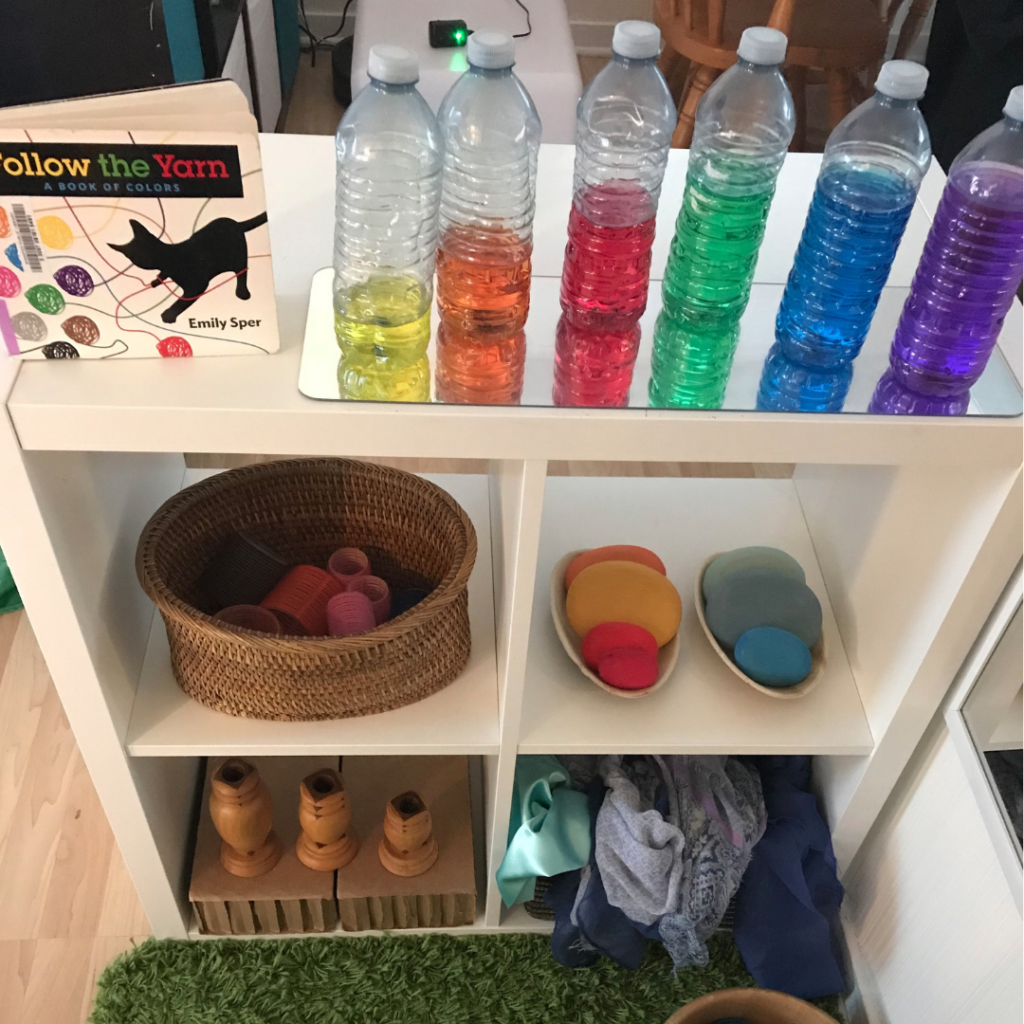
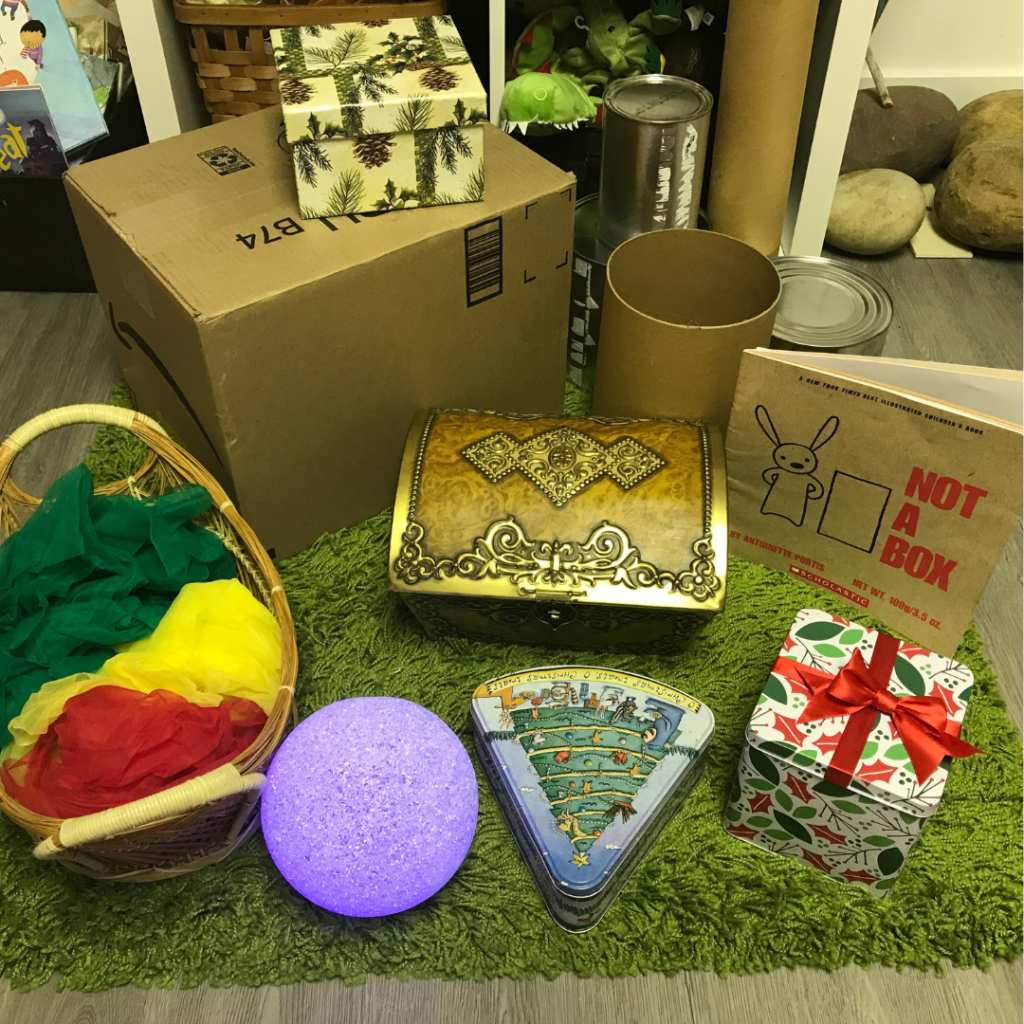
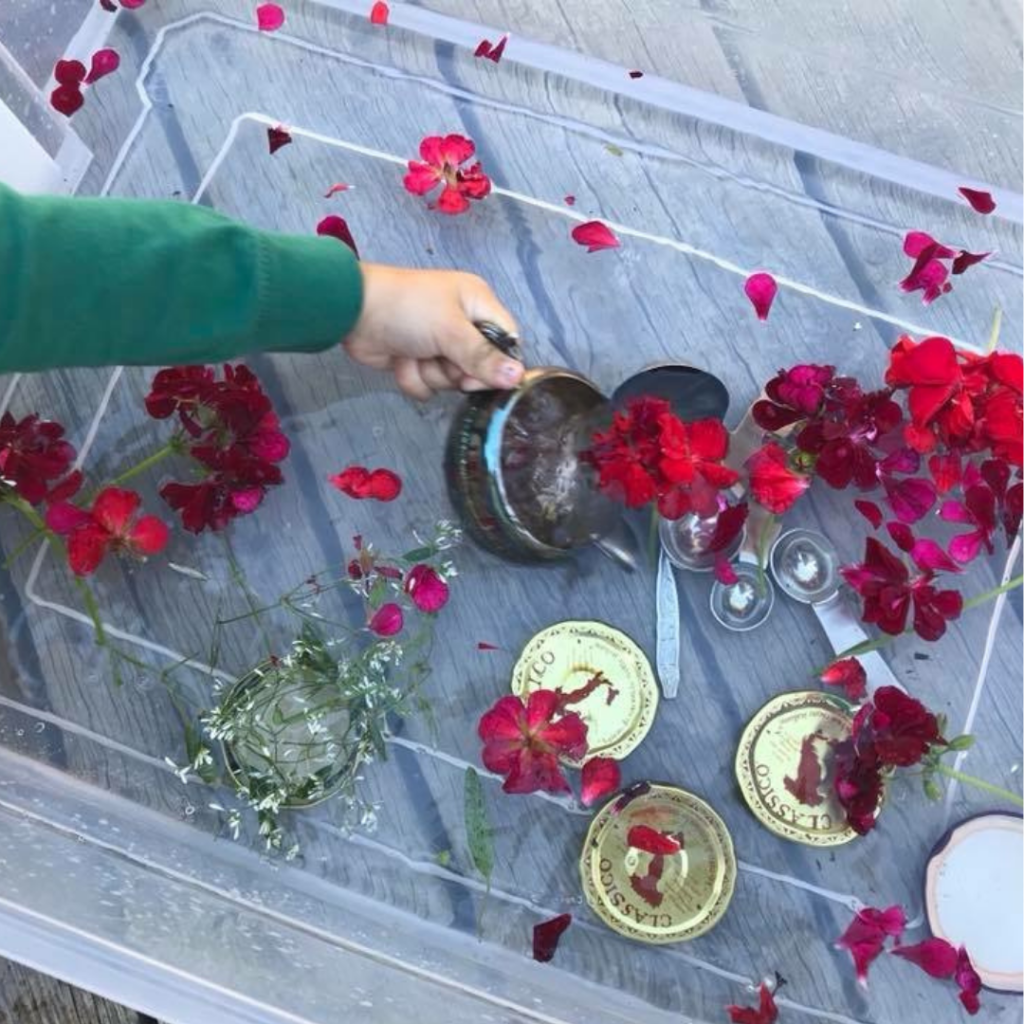
3. How to Choose Safe Loose Parts for Infants and Toddlers
Choosing loose parts for under 3’s doesn’t have to feel overwhelming. You don’t need a long shopping list or fancy setup—you just need to know what you’re looking for and why.
Start With Safety, But Don’t Let It Stop You
Yes, safety matters. But it doesn’t have to limit you. Many everyday items become brilliant loose parts when you think intentionally.
Here are a few safety considerations I always keep in mind:
- Size: If it fits through a paper towel roll, it’s too small.
- Durability: Can it withstand mouthing, dropping, and rough handling?
- Sanitization: Can it be easily cleaned?
- Material type: Avoid anything sharp, brittle, or toxic. Natural doesn’t always mean safe—check for splinters, sap, or choking hazards.
If a child is still exploring orally, that doesn’t mean you can’t offer loose parts—it just means you adjust what you offer and how you supervise.
🌀 Reflection prompt: What are some everyday items you already have that could be used as safe loose parts?
Looking for even more visual inspiration? I’ve gathered a whole collection of real-life ideas on my Pinterest board for Loose Parts Play with Infants and Toddlers.
Think Sensory Movement and Engagement in Loose Parts Play
For infants and toddlers, the most meaningful loose parts are those that:
- Can be moved, dropped, banged, stacked, or transported
- Offer sensory feedback—like soft, rough, heavy, light, shiny, squishy, or cool to the touch
- Invite repetition (because repetition is how they learn!)
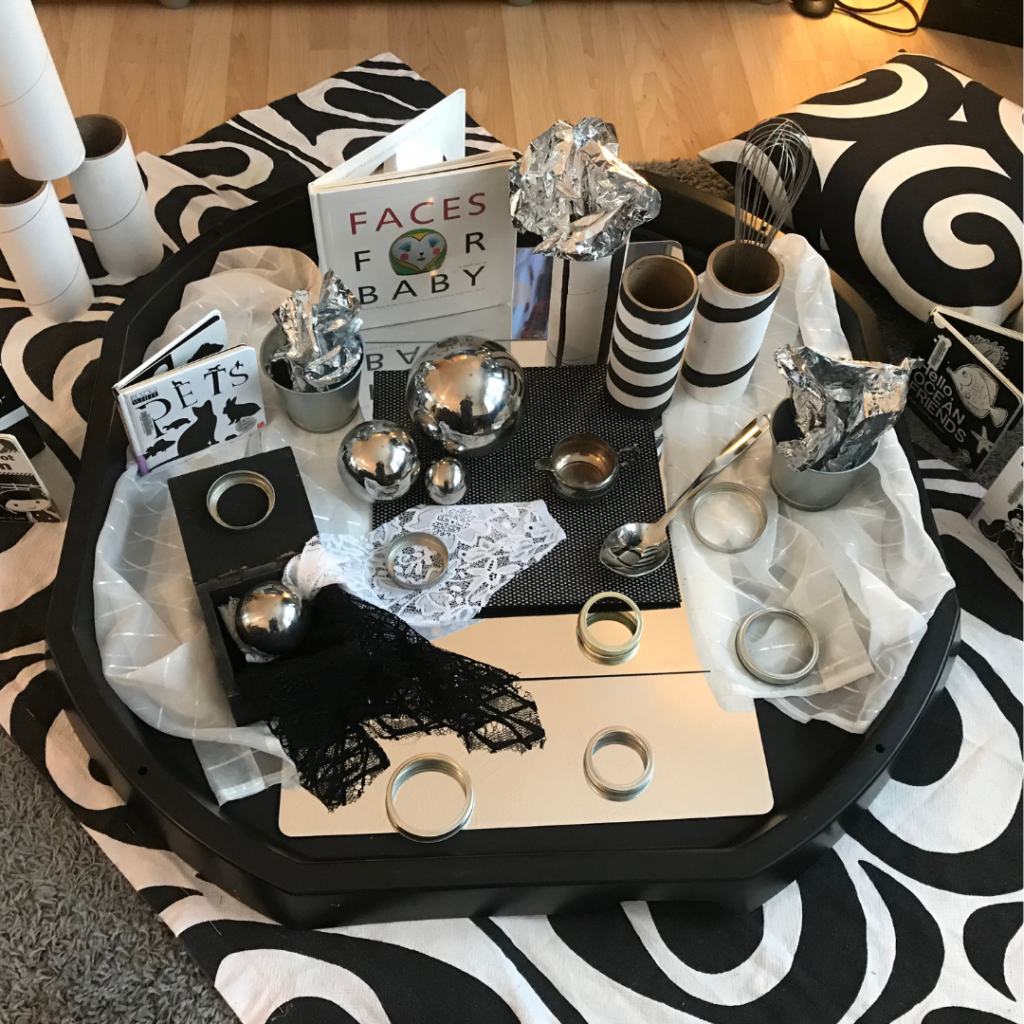
Some of my favourite starter loose parts:
- Soft brushes and safe kitchen items
- Fabric scraps and scarves
- Large wooden rings
- Silicone muffin cups
- Empty boxes and trays
- Light baskets, mirrors, or lids
“The magic isn’t in what the item is—it’s in what it allows the child to do.”
Want to see what this looks like in action?
Here’s a quick video where I walk through loose parts play specifically for infants:
🌀 Reflection prompt: What kinds of actions do your infants and toddlers seem drawn to lately—dumping, carrying, banging, rolling? What could you offer to support those actions?
Don’t Forget the Container Is Also a Loose Part
Seriously. Buckets, baskets, boxes, muffin tins, crates—they’re not just storage. Toddlers often find these more interesting than the items inside.
If you’ve ever set up an invitation and found the child playing with the container instead—you’re not doing it wrong. You’re watching a child explore in exactly the way they need to.
🌀 Reflection prompt: What if you offered a setup where the container was the play? What would that shift in perspective invite?
4. Loose Parts Play Ideas for Infants and Toddlers to Try This Week
You don’t need a complete overhaul of your program to get started. Just a few well-chosen materials, a bit of observation, and a willingness to follow the child’s lead.
Here are five simple, sensory-rich ideas you can try right away.
1. Treasure Basket for Infants
Choose 3–5 larger, textured items like:
- A basket that tips, wobbles, or crinkles
- Fabric scraps (think different textures: velvet, silk, cotton)
- Wooden rings or spoons
- Silicone baking cups
- Soft brushes or large pompoms
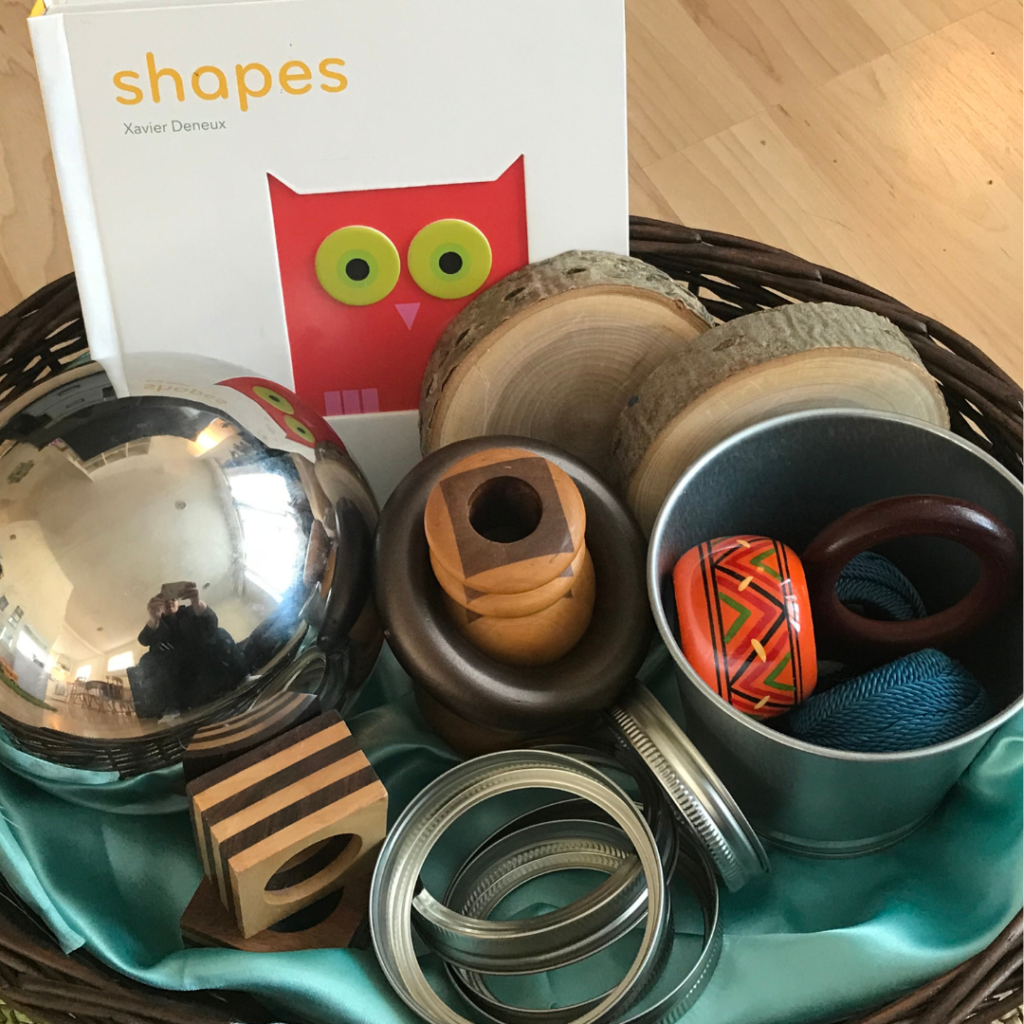
Place them in a low, open basket and let infants explore at their own pace. You’ll likely see mouthing, grasping, banging, and turning—the early foundations of learning.
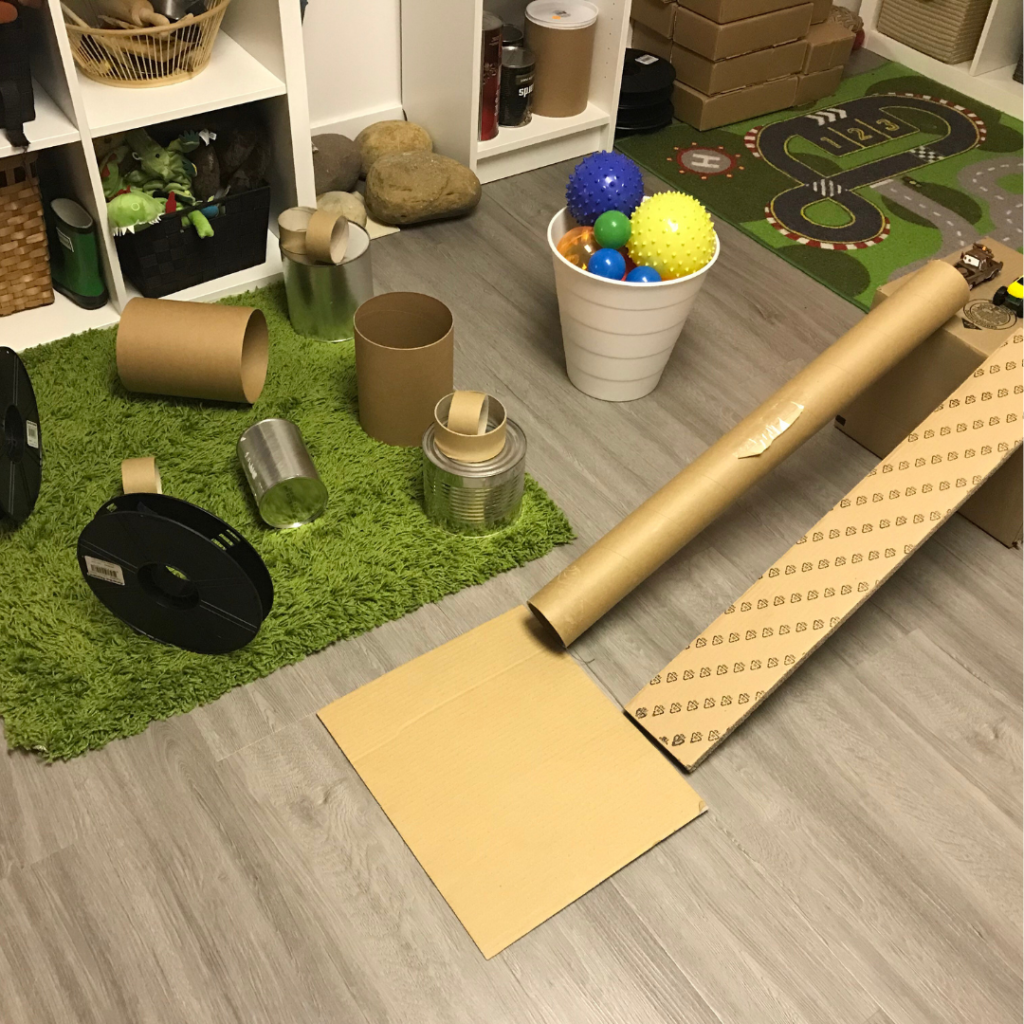
2. Transporting Tray for Toddlers
Toddlers love to move things from one place to another. Offer:
- Pinecones, scarves, or plastic lids
- A muffin tin
- A few cardboard tubes or small trays
Let them load, carry, dump, and repeat. This supports coordination, problem-solving, and emerging schemas like transporting or trajectory.
This doesn’t need to be a “station”—it can be part of your everyday environment and evolve based on how the children interact with it.
3. Sound + Movement Invitation
Use materials that make noise or invite rhythm:
- Scarves to wave or shake
- Metal tins
- Wooden spoons
- Shakers or large bells
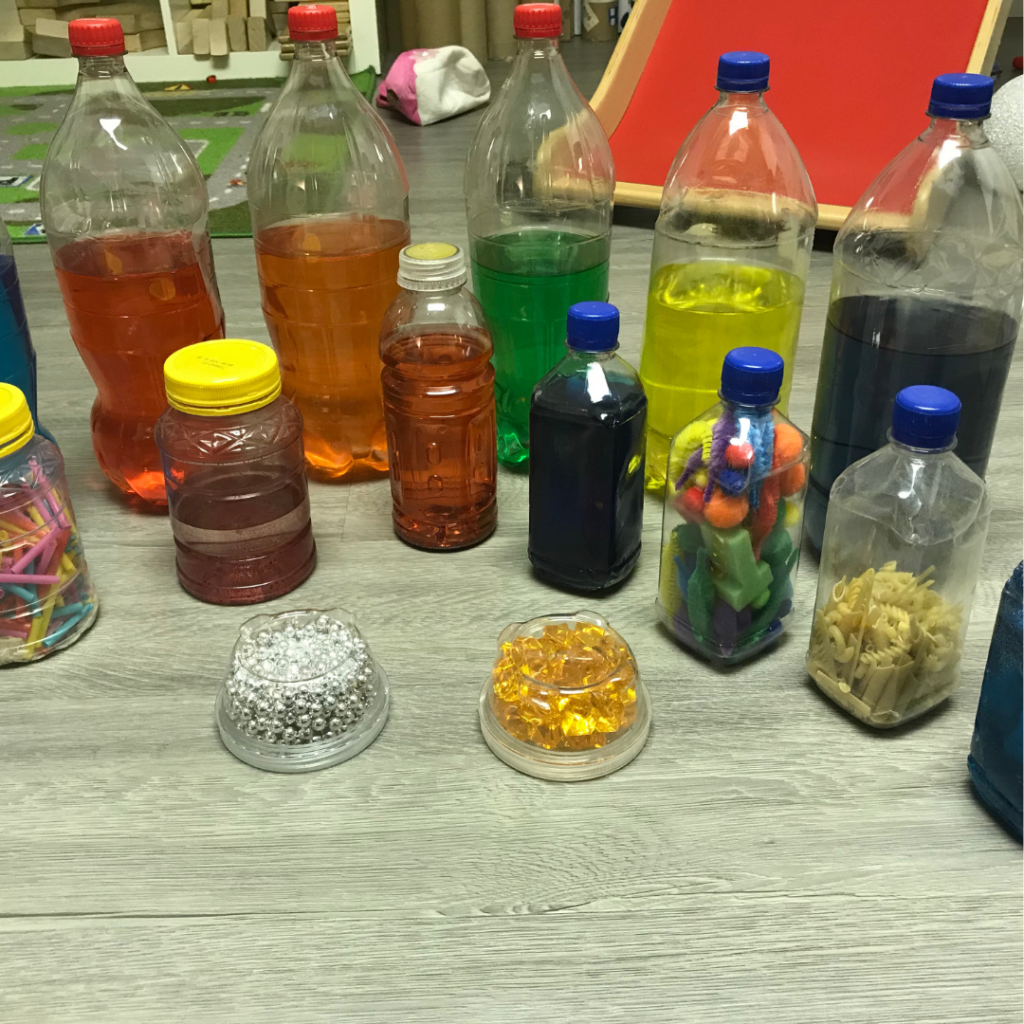
Another way to enhance this experience is to set them out near a mirror or window. The visual feedback adds to the sensory loop and keeps the experience engaging.
4. Natural Elements in a Soft-Surface Space
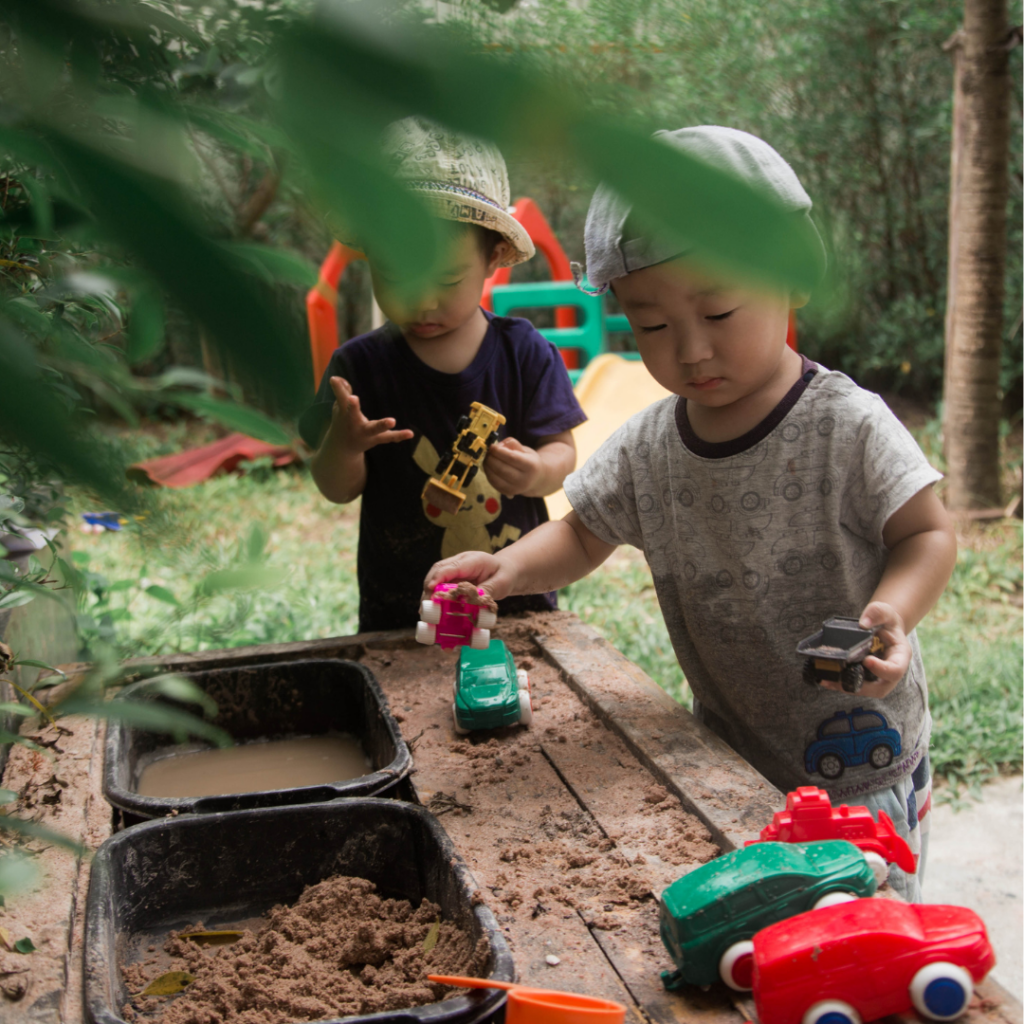
Whenever possible think of offering natural items such as driftwood, large pinecones, shells, or smooth stones on a play mat or rug. These elements bring texture, scent, and weight—things plastic toys often lack.
Tip: Watch how children test weight and balance, stack and restack, or simply explore with their hands and eyes.
5. Rolling Ramp
A toddler classic. Use:
- Items like balls, spools, or small tins
- A cardboard ramp or tray
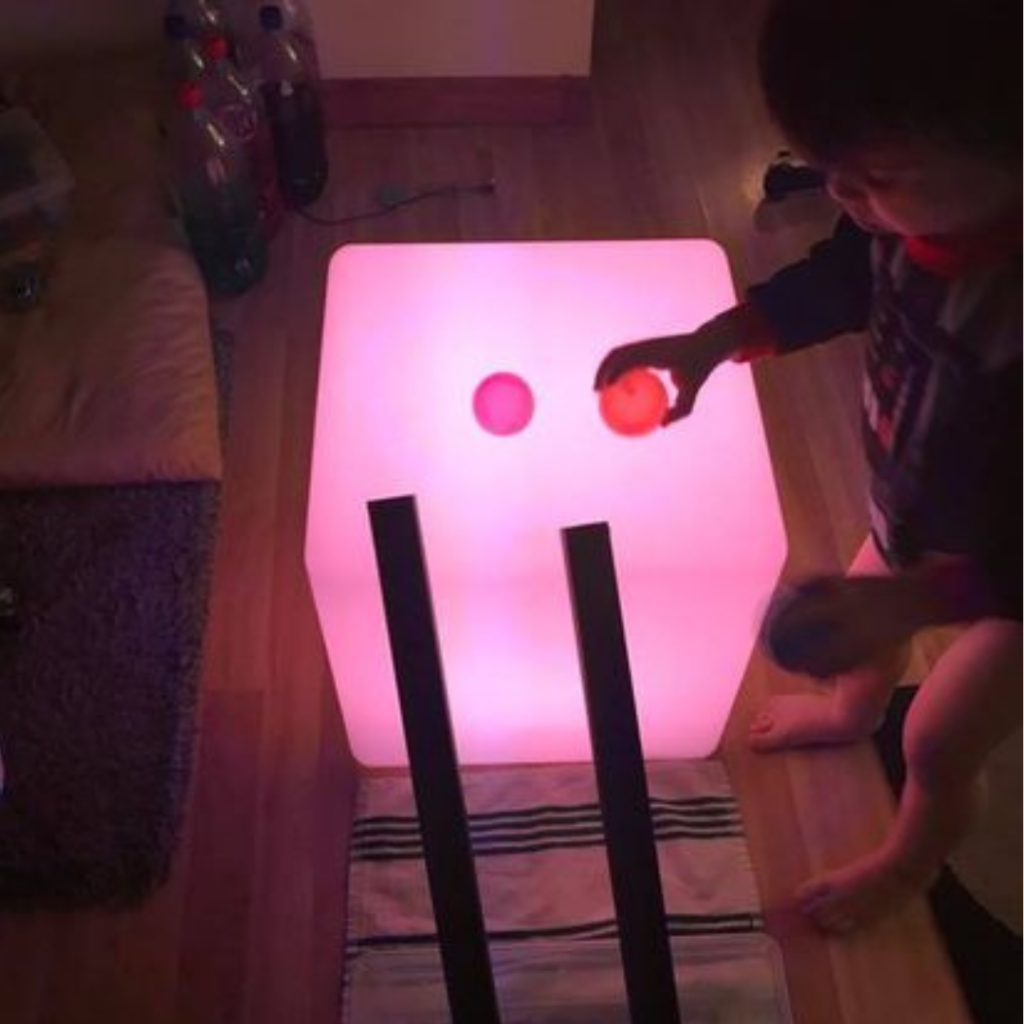
Observe what rolls, what doesn’t, and how they respond. Some may push objects up instead of down—both are valid explorations.
Need a visual example of toddler loose parts play in motion?
This short video highlights how toddlers naturally engage with materials in dynamic and meaningful ways:
📌 If you want even more ideas like this, including safety tips and family language, download the free Loose Parts Play Starter Kit for Infants and Toddlers. It’s full of practical inspiration tailored to under 3’s.
5. Mindset Shifts: Supporting Educators and Families
Sometimes the hardest part of loose parts play isn’t the materials—it’s the mindset.
Whether it’s our own internal doubts or the well-meaning concerns of others, stepping into this way of being with infants and toddlers can feel especially vulnerable. But when we shift how we see the materials, the children, and even ourselves, everything else starts to align.
From Control to Curiosity
With under 3’s, we’re often in a state of hyper-vigilance—and for good reason. We’re managing safety, regulation, transitions, and communication (or lack of words entirely!). So when a toddler dumps a basket or an infant mouths a wooden ring, our first instinct might be to redirect or clean up.
But what if we paused?
Instead of “Why are they making a mess?” try asking:
“What are they exploring?”
That infant pulling every scarf out of the basket and then crawling inside? They’re not being “destructive”—they’re engaging in sensory play, containment, and early spatial awareness.
That toddler who collects pinecones in a metal tin, dumps them, and starts over again and again? That’s schema learning in action.
When we focus on the action, we move from reacting to responding.
From “Not Safe” to “Safe and Rich”
Families and colleagues might raise eyebrows when they see infants playing with real kitchen items or toddlers running their fingers over driftwood or metal lids. These concerns are valid—but they’re often rooted in unfamiliarity, not fact.
Instead of defending your choices, try inviting families into the why behind your materials.
- “These large wooden rings are perfect for little hands to grasp, mouth, and bang together. They support fine motor development and coordination.”
- “Toddlers are wired to move and carry. These small baskets and trays let them follow that instinct in safe and meaningful ways.”
If you want help with how to explain this in family-friendly terms, I’ve created a free Loose Parts Collection Letter for Families you can download from this post on sparking the magic of loose parts play. It’s written with under 3’s in mind and helps build connection rather than confusion.
From “What Should I Use?” to “What Do I See?”
When working with infants and toddlers, the best planning often begins with observation. You’re watching how they move, reach, roll, mouth, pull, crawl, repeat.
Instead of asking, “What items should I put out next?”, consider:
- What action keeps showing up across the day?
- Is a child rolling everything—or stacking, banging, stuffing?
- What new material could support that action?
This kind of noticing helps you offer just enough—not too much—and keeps the environment dynamic without overwhelming you or the children.
You don’t need a new set of toys—you need a fresh perspective on the ones you already have.
🌀 Reflection prompt: What’s one mindset you’ve been holding onto that might need a gentle shift when supporting infants or toddlers?
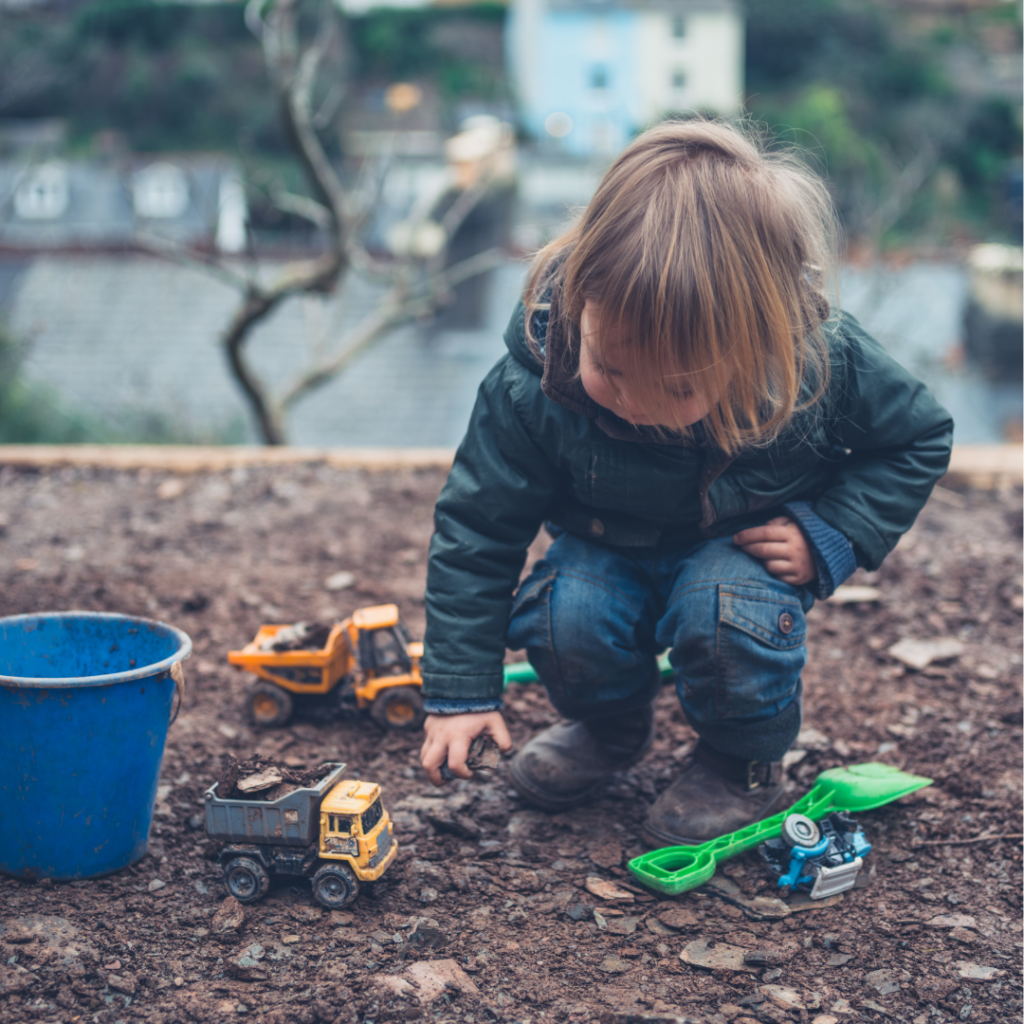
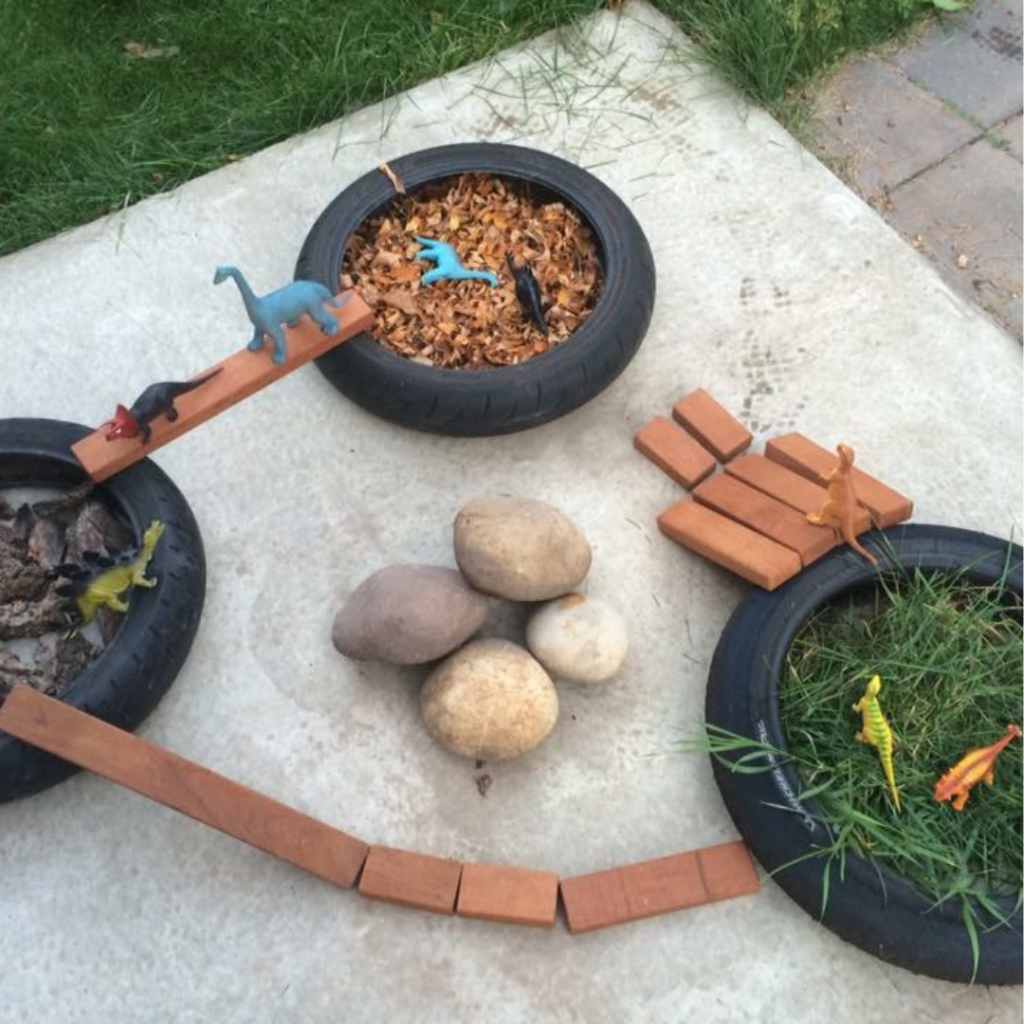
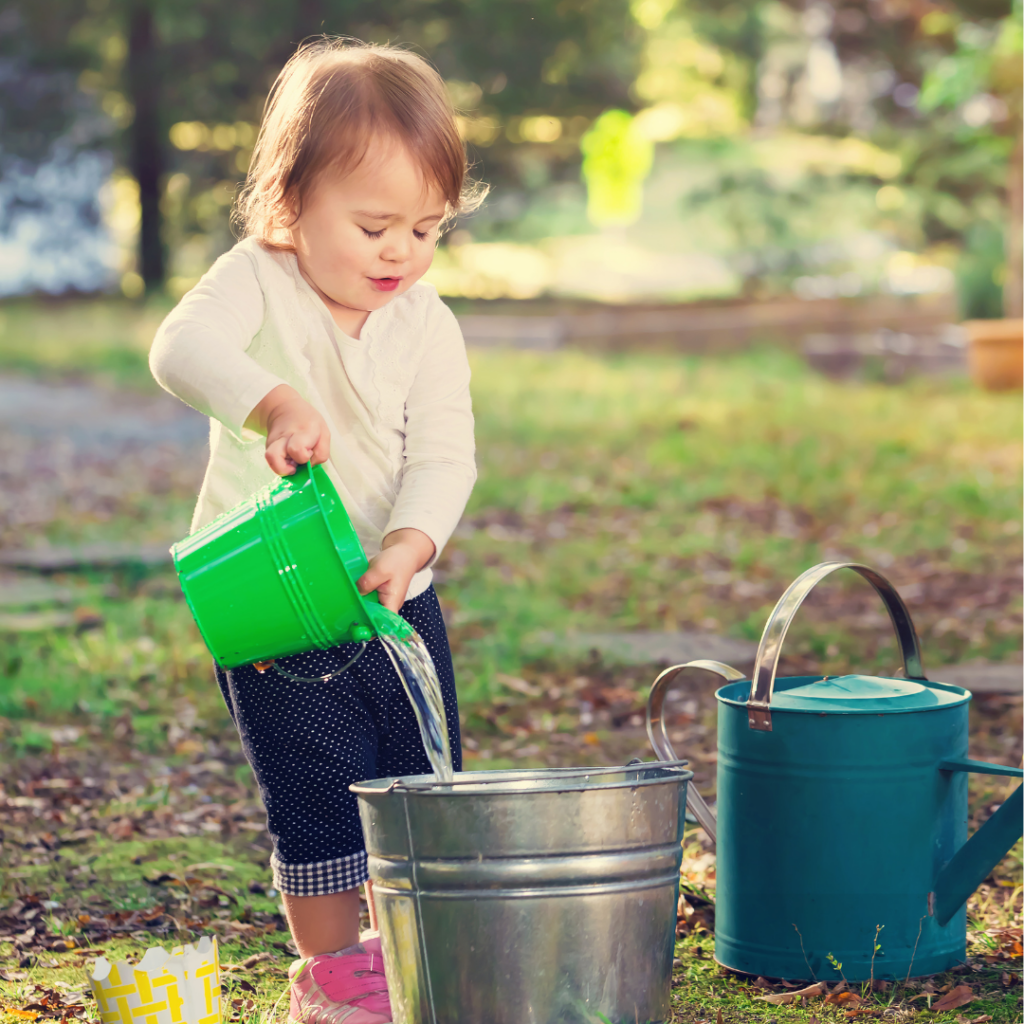
6. Frequently Asked Questions About Loose Parts for Toddlers and Infants
Sometimes the questions we carry are the very things that keep us from getting started. Let’s break down a few of the most common questions I hear from educators when it comes to loose parts play with infants and toddlers.
Can you really use loose parts with infants?
Yes—with intention.
Loose parts for infants aren’t about giving babies a pile of tiny objects. It’s about offering materials that are developmentally appropriate and invite exploration through the senses.
Think about:
- Fabric scraps for grasping and waving
- Large rings for mouthing and teething
- Shakers or tins that make sound when banged or dropped
Supervision and safety are always part of the process—but that doesn’t mean infants can’t experience the magic of loose parts play.
What materials are best to start with?
Start with what you already have—and see it with fresh eyes. Some of the most engaging loose parts for under 3’s include:
- velcro curlers
- wood cookies
- napkin ring holders
- scarves
- candle sticks
- cardboard tubes
- wooden rings
- sensory bottles
- wooden cups
- pinecones
- plastic bowls
- coasters

You can find a full list in the Loose Parts Play Starter Kit for Infants and Toddlers—plus family talking points and examples of how to set them up.
How do I keep it from becoming chaos?
This is such a valid fear—especially with toddlers. They will dump. They will move things across the room. That’s not chaos—that’s learning in motion.
Try starting small:
- Offer just a few items in one basket or tray
- Set up in a familiar space near where you already supervise
- Choose materials that can be easily cleaned up (trays, containers, rugs)
And remember: It’s okay to not put everything out every day.
If you need help setting boundaries without losing the magic, my post on cleanup and loose parts play has tips on how to guide clean-up in ways that work for toddlers.
How do I explain this to families or my team?
Start simple: “Loose parts are open-ended materials that children can explore using all their senses. For infants and toddlers, this often looks like dumping, mouthing, carrying, and repeating. It’s how they learn.”
You can also use the downloadable family collection letter from this blog post to open up conversation and invite collaboration.
7. Free Download: Loose Parts Play for Infants and Toddlers Starter Kit
If you’re feeling inspired but still unsure where to begin, I’ve got you covered.
The Loose Parts Play Starter Kit for Infants and Toddlers was created exactly for this moment—when you’re ready to start but want a little structure, clarity, and encouragement.
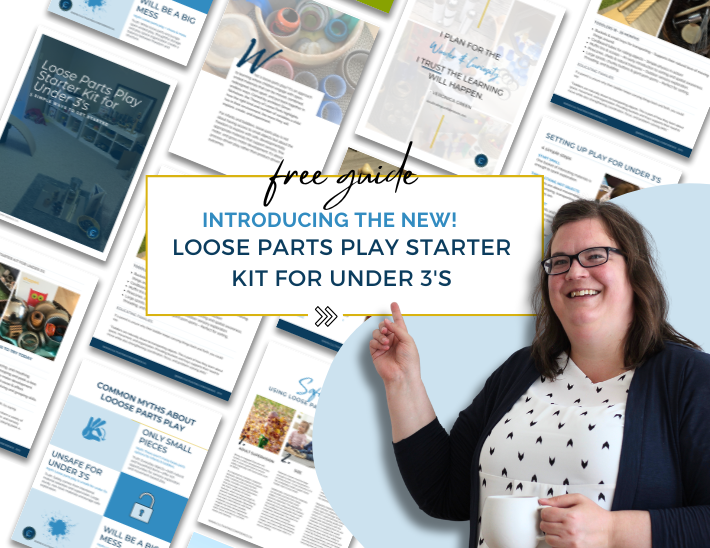
Inside, you’ll find:
- A reminder that you can start small, and still make a big impact
- Simple, age-appropriate loose parts you can use with infants and toddlers
- Safety reminders and supervision tips
- Set-up examples to spark your planning
- Educator language to use with families
👉 Click here to download your free Starter Kit and take your next step with confidence.
8. Where to Go Next on Your Loose Parts Journey
Whether this is your first deep dive into loose parts play—or you’ve been dabbling and are ready to go deeper—remember that this is a practice built over time. It doesn’t need to be rushed or perfected.
What matters most is that you begin. Watch closely. Reflect intentionally. Adjust as you go.
If you’re craving more support, stories, and real-life application, you can:
- Explore the blog archives like Getting Started with Loose Parts Play, Cleanup and Loose Parts, or Loose Parts Storage.
- Follow along on Pinterest where I share ongoing inspiration, ideas, and materials in action.
- Or, if you’re feeling ready to dig even deeper, there’s an on-demand workshop, Loose Parts Play for Infants and Toddlers waiting in the wings for when you’re ready. Unlimited access + 2 hour certificate + tour of play ideas for $39 CAD. Learn more about it HERE.
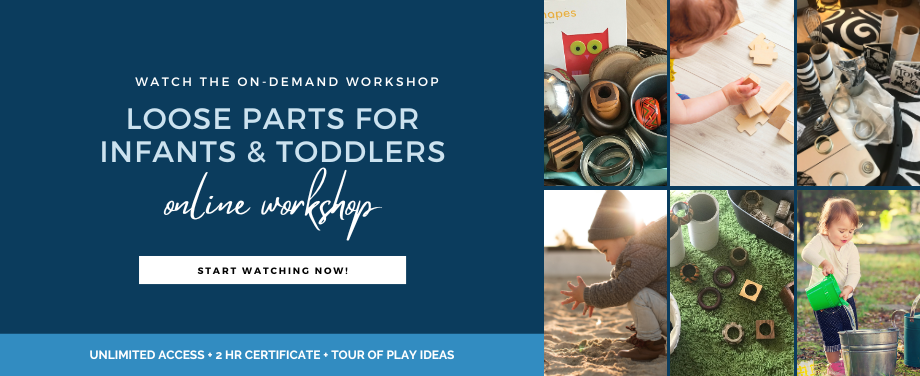
Loose parts play isn’t about doing more.
It’s about noticing more, trusting more, and creating space for children to show you what they already know.
✨ If this post sparked something for you, I’d love to hear about it. Feel free to share your thoughts or questions in the comments—or even better, share this post with a fellow educator who might need the reminder that yes, loose parts play is absolutely possible with under 3’s.
📌 And if you’re a Pinterest person, don’t forget to save this post so you can come back to it whenever you need a little inspiration—or courage to keep going.
You’ve got this.
— Veronica 💛
Hey there!
I'M VERONICA
I am an Early Childhood Consultant and very passionate about supporting and inspiring my fellow Educators. I will share my reflections and experiences about implementing my philosophy, views, and ideas into my practice.
COFFEE & BOOK LOVER
find more on
stay connected
Loose Parts for Infants and Toddlers
Leave a Reply Cancel reply
ENDLESS POSSIBILITIES OF
loose parts play
ON-DEMAND FREE TRAINING
Unlock the possibilities to simplify your planning, become proactive with behaviours & enjoy your role again! I'll guide you to find the beauty in loose parts play.
DISCOVER THE POSSIBILITIES!
I'M VERONICA.
EARLY YEARS CONSULTANT
Here to help you simplify planning, understand behaviours & build strong relationships...all with the magic of loose parts!
ENGAGE YOUR CURIOSITY
MY EARLY YEARS JOURNEY
THE MODERN EDUCATOR TOOLKIT
WORKSHOP (LIVE & REPLAYS)
CUSTOM TEAM PD BUNDLE
POSSIBILITIES OF LOOSE PARTS TRAINING
CONTACT
get your
guide!
Wanna know how to GET STARTED with these magical materials?
find out right here!
back to top
WEEKLY EMAIL
join the
let's stay connected...
Only inspiration & support will drop in your inbox. Unsubscribe at anytime.
CLOSE
I'M VERONICA.
Here to help you simplify planning, understand behaviours & build strong relationships...with the magic of loose parts!
VERONICA
POSTED BY:
also known as Ronnie!
SPECIAL NEEDS MOMMA &
EARLY CHILDHOOD CONSULTANT
Inspiring and mentoring my fellow educators how to use loose parts to enhance all aspects of their practice. I share my dual roles of educator & momma and how our autistic son has shown me so many new perspectives.
read about my early years journey